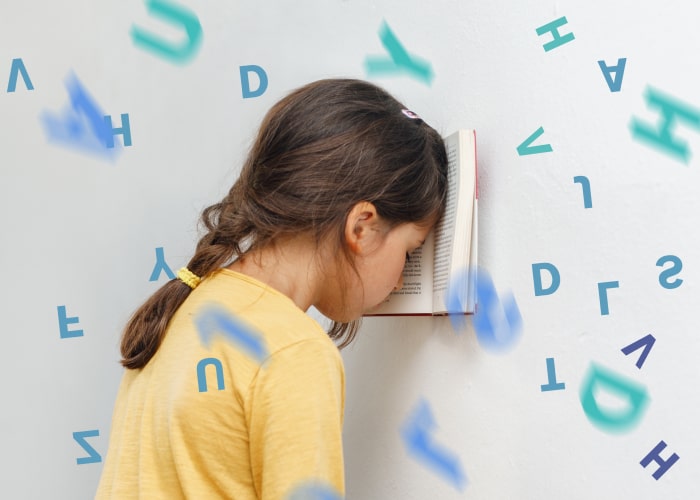
Dyslexia and Reading Difficulties
There is more to reading than seeing letters. It’s about visually processing the words on a page and understanding them.
Sometimes, reading difficulties can be caused by a problem with your eyes or how your brain processes what your eyes see.
Dyslexia is the most commonly known cause of reading difficulties but problems with binocular vision and a condition called visual stress can also make reading difficult.
What is dyslexia?
Dyslexia is caused by disruptions in how your brain processes text, which creates unique challenges in reading, writing and information processing. It is not an eye condition and cannot be diagnosed by an optometrist.
However, we often find that individuals with dyslexia also have visual stress or a problem with binocular vision, which can be diagnosed and treated by an optometrist.
Symptoms of vision-related reading difficulties
Symptoms of reading difficulties caused by vision problems include:
- Difficulty recognising words
- Struggling to follow text from left to right
- Frequent loss of place while reading
- Unusual eye movements when scanning text
- Reversing letters or numbers
- Avoiding reading activities
- Low reading comprehension
- Unexplained frustration during learning tasks.

Diagnosing visual issues that affect reading
If you have spotted any of the above symptoms and are worried that your child is struggling to read, our specialised assessments can help.
We will explore how your child's visual system interacts with their learning. This assessment can detect subtle problems with your child’s binocular vision and identify hidden visual stress triggers.
Binocular vision
Your eyes are designed to work as a pair but sometimes they’re out of sync. This is called binocular instability – a microscopic misalignment that can make reading a real challenge.
Our precision tests can spot these minute discrepancies that standard exams miss.
Visual stress
For some people, black text on white paper can feel like a visual assault. This is called visual stress, or Meares Irlen syndrome, and it makes reading text as it usually appears exhausting.
Our diagnostic toolkit for visual stress includes:
- A pattern glare test where your child will look at different high-contrast horizontal patterns within a circular outline
- Coloured overlay assessments where we will see if adding colour over the page makes reading easier for your child
- A rate of reading test where your child reads text out loud.

Let’s get started
Vision problems could be exacerbating your child’s dyslexia and/or reducing their reading ability.
Request a special investigation appointment today; it could be the breakthrough that unlocks their potential.
